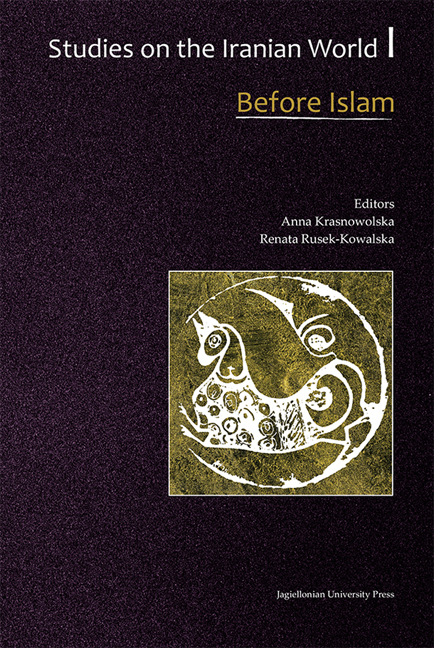The Hong-e Azhdar Parthian Rock Relief Reconsidered
from Archaeology
Published online by Cambridge University Press: 12 January 2018
Summary
SUMMARY
This article presents the preliminary results of the research conducted between 2008 and 2010 by the Iranian-Italian Joint Expedition in Khuzestan at Hong-e (also Khonge) Azhdar, near the modern city of Izeh. The aim of the expedition was the reconnaissance of the Parthian rock reliefs recovered in the Izeh plain, namely Hong-e Azhdar, Hong-e Yaralivand and Hong-e Kamalvand, by the use of the most up-to-date reconnaissance techniques (GPS survey and laser scanning). In the following pages special focus is given to the Hong-e Azhdar Parthian rock relief, which is sculpted onto a boulder near the mountain slopes, for the laser scanner survey revealed traces of re-sculpting and trenches opened at the foot of the boulder itself revealed structures in undressed stones that seem what remains of an ancient open-air sanctuary.
In 2008 the Iranian-Italian Joint Expedition in Khuzestan started operations in the area of Hong-e Azhdar, a village located at the entrance of a small valley in the Bakhtyari Plateau, about 17 km north of the modern city of Izeh. The expedition, supported by the Italian Ministry of Foreign Affairs and the Fondazione CRT, operates within a Memorandum of Understanding signed between the Centro Ricerche Archeologiche e Scavi di Torino per il Medio Oriente e l'Asia and the Iranian Center for Archaeological Research. Other institutions involved in the project are the Polytechnic of Torino, the University of Torino and the Ayapir Cultural Heritage NGO.
The aim of the project is the reconnaissance of the Parthian rock reliefs located in the Izeh plain, which was part of the ancient region of Elymais. These rock carvings cover a period of time spanning from the Old Elamite to the Parthian age and have been the object of a number of studies by scholars of different nationalities. The high standard scientific results of these studies resulted in the classification of the reliefs based on the subjects they represent and their style. Some carvings of religious nature, discovered in Shah Savar, Eshkofte Salman (Shekaft-e Salman) and Kul-e Farah, provide a deep insight into the art of the Elamite period (20th–7th century BC), but the majority of rock carvings known in Elymais must be dated to the Parthian period (mid 2nd century BC–2nd century AD):
- Type
- Chapter
- Information
- Studies on the Iranian World: Before IslamMedieval and Modern, pp. 291 - 300Publisher: Jagiellonian University PressPrint publication year: 2015



